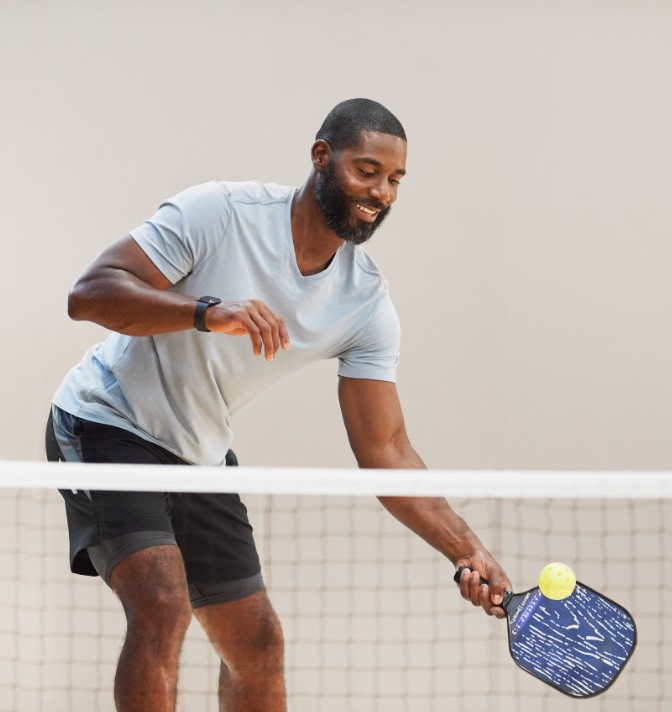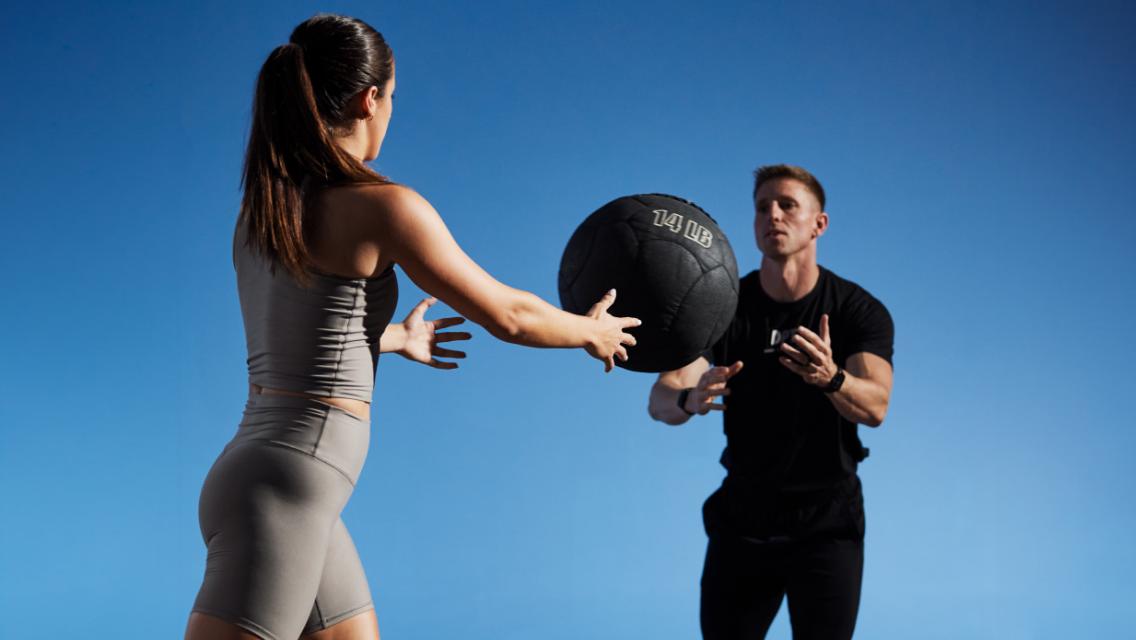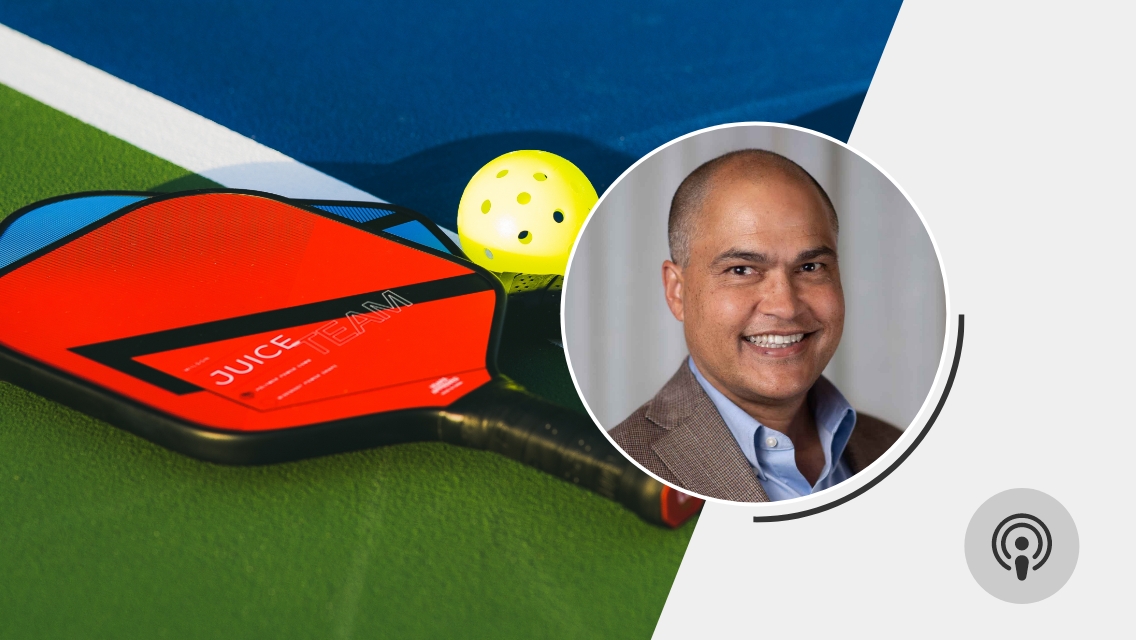The popularity of pickleball continues to grow as players, both novice and experienced, challenge themselves in their skill, competition, and level of play. An easy-to-learn game that has earned a place in many peoples’ fitness regimens, the sport, however, has made headlines recently for a less positive reason: a rise in player injuries.
“I would first say that pickleball deserves to be celebrated for getting so many people out and active — it’s helping so many people live healthier lives,” says Bob Dunn, pickleball lead at Life Time in Rochester Hills, Mich. “I think that’s the real story, although injuries occurring from pickleball have been the focus of the catchier headline as of late. Even though some players do indeed get injured, that’s the case with many, if not all, sports.”
As with all activities, proactive prevention through practice and skill-building is key to staying strong on the pickleball court — the trainer tips below offer a great starting point. But first, a few thoughts on the increase in injuries.
Why Do Pickleball Injuries Occur?
The size and demographics of the population of pickleball players may cause the statistics to be somewhat misleading, according to Dunn. “There are going to be more injuries when the number of pickleball players increases by 10-fold, as it has over the last two to 10 years,” he says.
“There may also be a higher incident rate because of the number of older adults who play pickleball compared to other sports,” Dunn explains. “The game also attracts players who are more injury prone because the sport is so accessible and inviting to all: There are people who are not used to participating in sports or haven’t done anything athletic for years who are playing pickleball.”
Dunn notes that they also see players who have existing issues, often related to rotator cuff or ligament tears in the knee, that were undiagnosed prior to playing.
“Of course, we want these people to stay safe from injury, but what doesn’t often get considered is that these people are now finding a way to get active because of pickleball,” Dunn adds. “It has given them a way to stay socially engaged and exercising regularly. Anecdotally, I can say that there are players, for example, who seek medical attention for a twisted ankle only to also learn that their cholesterol and heart-rate levels have improved.
“Any time you’re competing and pushing your body in athletic ways,” he adds, “there are some risks.”
7 Tips for Minimizing Pickleball Injuries
Dunn and Kris Miner, lead pickleball pro at Life Time in Minneapolis, Minn., provide these tips for avoiding injuries while playing pickleball.
1. Warm up beforehand.
“Your muscles need to be warmed up in order to move properly,” says Miner. “Even five to seven minutes of shuffling, arm circles, and stretching major muscles groups can make a big difference in performance and safety. Be sure to include the neck and wrists too.”
Dunn suggests performing a dynamic warm-up that gets the blood flowing to the arms and legs. “From my experience, strains and muscle pulls account for by far the greatest percentage of injury, and a proper warm-up can help mitigate that risk.”
2. Wear proper footwear.
“Court shoes, designed for tennis or pickleball specifically, are important,” says Miner. “Running shoes are highly prone to causing problems because they are meant to propel the foot forward and do not allow for lateral movement. Pickleball players really need shoes that support lateral movement.”
3. Protect your eyes.
“I highly recommend wearing lightweight goggles when playing pickleball,” says Miner. “Players are typically slow to learn the importance of protective eyewear, but serious injury such as a detached retina can occur. Eye injuries often come from an errant ball hit by a partner that wasn’t expected, rather than a ball coming straight toward the eye.”
“There’s a higher risk for eye injuries when playing doubles pickleball because the players are standing close together and playing at a fast pace,” Dunn adds. “This can lead to ball deflections off a player’s paddle that can go directly in the eye.”
4. Loosen your paddle grip.
“I often see players gripping the paddle too tightly, which can create stress in their arm,” says Dunn. “I’d bet if players would loosen their grip that it would cure over half of the complaints about tennis elbow. A pickleball paddle is lighter than a tennis racquet and the momentum imparted to the ball is significantly less than in tennis, so there is less grip pressure needed. Gripping too tightly sends unnecessary stress through the wrist to elbow.”
5. Be aware of your surroundings.
“Players should always be aware of where the ball to avoid having it strike you in the eye or stepping on it and rolling your ankle. And when playing doubles, it’s important to be aware of where your partner is to avoid collision,” says Miner.
“If your ball rolls onto another court, it’s your responsibility to warn those players by shouting ‘Ball!’ so no one trips on a ball they weren’t expecting to be on their court. In those cases, you should allow the ball to be returned to you rather than entering another court to retrieve it because players aren’t expecting someone to enter their court while playing.”
6. Do not backpedal.
“Players should never run backward to get the ball,” says Dunn. “If a lob goes over your head, turn your body 180 degrees and run toward the back of the court to track down the ball, or turn 90 degrees and side shuffle. In pickleball, backpedaling is considered the leading cause of broken bones, often wrists, and concussions from a player catching a heel while moving backward and falling.”
7. Listen to your body and know your limits.
“Be aware of how often and how long you are playing,” says Miner. “Pickleball is very fun, and it’s easy to lose track of time or how hard you’re playing. Acknowledge how much activity your body can handle and if needed, work your way up to longer, more frequent games and more intense play over time.
“People get competitive and addicted to the fun, social aspect of playing pickleball,” she continues. “At times, they may push themselves beyond what their body can accommodate. This is a prime opportunity for injury. As much as a player may want to crush a ball for the winning point, it’s important to save your body from avoidable injuries by playing with control. Also allow your body time to rest and recover after playing.”





